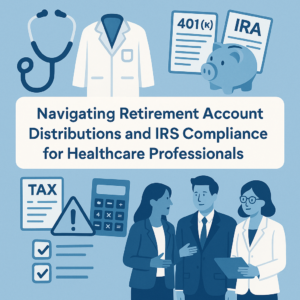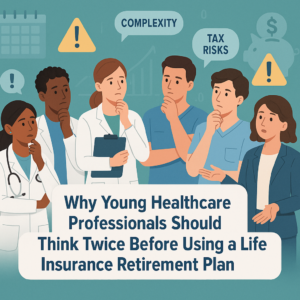What is a SEP IRA?
A SEP IRA is a retirement account designed for self-employed individuals and small business owners. It allows employers (including self-employed individuals) to make tax-deductible contributions to retirement accounts on behalf of their employees (including themselves). The simplicity and flexibility of SEP IRAs make them a popular choice for those looking to maximize their retirement savings.
Core Benefits of SEP IRAs
- High Contribution Limits: As of 2024, you can contribute up to the lesser of 25% of your net earnings or $69,000, allowing for substantial retirement savings compared to other plans.
- Tax Advantages: Contributions are tax-deductible, reducing your taxable income for the year. Investment earnings grow tax-deferred until retirement.
- Simplicity and Flexibility: SEP IRAs are easy to set up and administer, with minimal paperwork and administrative costs.
Comparison with Other Retirement Accounts
SEP IRAs offer higher contribution limits compared to Traditional IRAs and Roth IRAs. While Traditional IRAs and Roth IRAs have a contribution limit of $7,000 for 2024 (or $8,000 if you’re 50 or older), SEP IRAs allow significantly higher contributions, making them suitable for higher earners like healthcare professionals. Additionally, unlike 401(k) plans, SEP IRAs have simpler administrative requirements, making them easier for small business owners to manage.
Benefits of SEP IRAs for Healthcare Professionals
High Contribution Limits
One of the most significant advantages of SEP IRAs is the high contribution limit. For self-employed healthcare professionals, this means you can put away a substantial amount each year, significantly enhancing your retirement savings.
Tax Advantages
Contributions to a SEP IRA are tax-deductible, reducing your taxable income for the year and lowering your overall tax burden. Additionally, the investments within the SEP IRA grow tax-deferred, meaning you won’t pay taxes on earnings until you withdraw them in retirement.
Suitability for Self-Employed Healthcare Professionals
SEP IRAs are particularly advantageous for self-employed doctors, dentists, pharmacists, physical therapists, and psychologists. These professionals often have fluctuating incomes and varying levels of business expenses, making the flexible contribution limits of SEP IRAs an ideal fit.
When a SEP IRA Might Not Be the Best Fit
While SEP IRAs are beneficial for self-employed individuals, they might not be the best fit for those employed by large healthcare organizations. In such cases, a 401(k) plan might offer better benefits, including employer matching contributions, which SEP IRAs do not provide. For young healthcare professionals employed by larger practices or hospitals, maximizing 401(k) contributions could be more advantageous than an IRA.
Tax Implications and Strategies
Understanding the tax implications of your retirement contributions is crucial for optimizing your savings. For healthcare professionals who are self-employed, awareness of FICA taxes and payroll distributions is essential.
Understanding FICA Taxes
FICA taxes consist of Social Security and Medicare taxes. As a self-employed healthcare professional, you are responsible for both the employer and employee portions of these taxes. This can significantly impact your overall tax liability.
Adjust Payroll vs. Owner’s Distributions
Consider adjusting your payroll distributions to minimize FICA taxes. By diverting more income to owner’s earnings and withdrawing it as a transfer instead of paying it through payroll, you can reduce your FICA income.
Contribution Calculation and Planning
To make the most of your retirement accounts, it’s essential to know how to calculate the maximum allowable contributions and employ strategies to avoid over-contributing.
Several online calculators and financial planning apps can assist in calculating SEP IRA contributions. Examples include the SEP IRA Contribution Calculator on the IRS website.
Regular Contributions
Make consistent contributions throughout the year to benefit from dollar-cost averaging. This strategy helps to mitigate the impact of market volatility on your investments.
Maintain a Buffer
Ensure you leave a buffer between your maximum contribution limit and actual contributions to avoid penalties for over-contributing. This way, if your estimates of self-employment tax, taxable income, or expenses are off, you won’t face penalties for exceeding the allowable limits.
Diversify Investments
Diversifying your investments may help spread risk and potentially lead to more stable returns over the long term. Consider a mix of stocks, bonds, and other investment vehicles appropriate for your risk tolerance.
Focus on Growth
Young healthcare professionals can afford to take more risks. Consider investments with higher growth potential to maximize long-term returns.
Regularly Review and Adjust
Regularly review and adjust your investment portfolio to ensure it aligns with your financial goals and risk tolerance. Market conditions and personal circumstances can change, so it’s essential to stay proactive.
Common Mistakes to Avoid
Over-Concentrating in One Sector
Avoid putting all your investments in one sector, even if it’s healthcare. Diversification across different industries and asset classes can reduce overall risk.
Neglecting to Rebalance
Failing to periodically rebalance your portfolio can lead to unintended risk exposure. Regular adjustments help maintain your desired asset allocation.
Why Regular Financial Reviews Matter
Regularly reviewing your financial status and retirement accounts is essential for proactive financial planning.
Sync Financial Accounts
Syncing your financial accounts and providing updated information to your financial advisor enables thorough reviews and timely adjustments. This practice ensures that your financial strategy remains aligned with your goals.
Quarterly Financial Reviews
Conducting quarterly financial reviews can help you stay on track and make necessary changes to your retirement contributions and investments. Regular reviews allow you to respond to changes in income, expenses, and financial goals promptly.
Risks of Not Conducting Regular Reviews
Failing to review your finances regularly can result in missed opportunities for tax deductions, unnoticed fee increases, or maintaining underperforming investments. Periodic reviews ensure that your financial plan adapts to your changing life circumstances and market conditions.
Specific Elements to Review
- Investment Performance: Assess the returns of your portfolio and make necessary adjustments.
- Contribution Levels: Ensure you are maximizing allowable contributions without over-contributing.
- Fee Structures: Monitor and minimize fees associated with your investments to maximize net returns.
- Changes in Tax Laws: Stay updated on tax legislation that could impact your retirement strategy.
Working with Financial Advisors
Working with a qualified financial advisor can help you navigate complex financial decisions and optimize your retirement planning.
Choosing a Financial Advisor
Select a financial advisor who understands the specific needs of healthcare professionals and can provide personalized advice. Look for credentials such as CFP® (Certified Financial Planner) and experience in working with healthcare workers.
Benefits of Financial Advisors
Financial advisors can provide expert guidance on investment strategies, tax optimization, and retirement planning. Their expertise can help you make informed decisions that align with your financial goals.
Personalized Advice
Financial advisors offer tailored advice based on your unique financial situation and goals. They can develop a comprehensive financial plan that addresses your specific needs and circumstances.
Checklist for Selecting a Financial Advisor
- Credentials: Look for credentials such as CFP® (Certified Financial Planner).
- Experience: Ensure the advisor has experience working with healthcare professionals.
- Fee Structure: Understand how they charge for their services—flat fee, hourly rate, or percentage of assets under management.
- References: Ask for and check references from other healthcare professionals.
- Personal Fit: Ensure that the advisor understands your specific financial goals and communication style.
Maximizing your retirement contributions is crucial for ensuring a secure financial future. By understanding the different types of retirement accounts, the importance of tax implications, and strategies to maximize contributions, you can take control of your financial future.
Start planning early, stay informed with regular financial reviews, and consult with a financial advisor to make informed decisions about your retirement savings.







